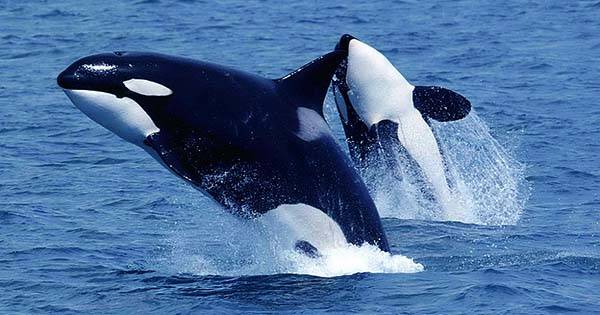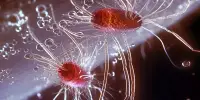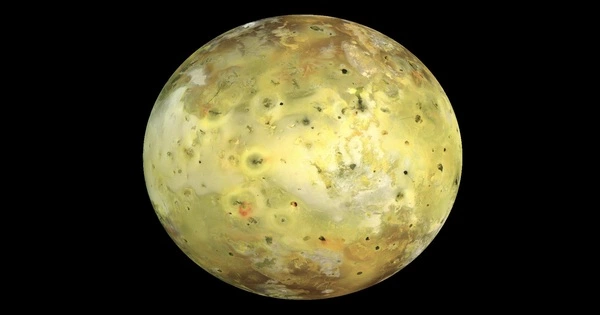Several groups of orcas live in the northern Pacific near Japan and Russia. They have no touch with one another, do not seek the same food, do not speak the same dialect, and do not mate. How is this possible when they live so close together and are of the same species?
Olga Filatova, a whale biologist at the University of Southern Denmark, is curious about how orcas colonized the northern Pacific, and she led multiple expeditions to the area while studying in Moscow. She now works at the Marine Biological Research Center of the University of Southern Denmark.
Some of her most recent findings have now been made public. She and colleagues investigate the complex interaction between orca culture and the post-glacial history of their colonization of the North Pacific in a recent paper published in Marine Mammal Science, demonstrating that the orca pods currently living near Nemuro Strait in northern Japan are descendants of orcas that settled there during the last ice age, around 20,000 years ago. Distant ancestors chose the region as a refuge, and their descendants have resided there ever since.

“Orcas are conservative and tradition-bound creatures who do not deviate from their traditions unless there is a compelling reason to do so.” “We see that in this population,” Filatova says.
This is the second time she has discovered an Ice Age orca refuge. The first is about 2500 kilometers away, near the Aleutian Islands. The pods there are just as traditional and conservative as their Japanese counterparts, and they are also descendants of Ice Age forebears who sought sanctuary in ice-free waterways.
“When the ice began to recede and orcas and other whales were able to swim to new ice-free areas, some of them did not follow.” “They stayed in their [refugia] and are still there,” Filatova said.
The experiments are based on genetic analysis (the researchers took skin biopsies of the animals) and sound analyses (recorded using underwater microphones).
“Orcas in the Nemuro Strait had unusually high genetic diversity, which is typical for glacial [refugia], and their vocal repertoire is very different from dialects of orcas living off the coast of Kamchatka to the north.” “Kamchatkan orcas are most likely the descendants of a few pods that migrated west from the central Aleutian refugium, which is why they are so different,” Filatova explains.
Orcas’ vocalizations are extremely diverse, with no two pods producing the identical sounds. As a result, these noises can be used to identify individuals’ family and pod affiliations. Orcas are not genetically programmed to create sound in the same way as cats are. When opening its lips, a cat who has grown up amid other animals and has never heard another cat will nonetheless meow. Orcas, on the other hand, learn to communicate via their mothers or other elder family members. Each pod has its own lingo that no one else understands.
“When we combine this with genetic analyses, we get a good idea of how different orca communities interact,” Filatova explains.
So far, two Ice Age refugia have been discovered, providing insight into how orcas could cope with current and future temperature changes: As the ice melts, they will most likely migrate northward, and this colonization may occur in small, individual families or pods rather than big waves.
The discovery of the two Ice Age refugia not only adds to our understanding of how orcas survived the Ice Age, but also creates a picture of orcas as extremely varied animals that may not fit neatly into one species.
“Many people believe that orcas should be divided into different species.” “I agree—at least in terms of subspecies because they are so different that talking about one species when discussing their place in the food chain or allocating quotas to fishermen makes no sense,” Filatova says.
Some orcas consume just herring, some only mackerel, and still others only a certain variety of salmon. Others eat solely marine mammals like seals, porpoises, and dolphins. Some eat a little bit of everything, while others dwell so far out in the open sea that we know very little about them.
Whether or not a pod eats fish—and which fish—has a big impact on the fishing in their area. When a country calculates fishing quotas, it must consider how many fish are naturally caught by predators, and because an orca may consume 50-100 kg of fish in a day, this has a significant impact on the quota calculation.
If pods eat marine mammals but do not touch fish, this is important if they are to be captured and sold to marine parks, where feeding marine mammals is difficult. While the popularity of marine parks is falling globally, there is still a considerable demand for orcas in Chinese marine parks.
Because there is only one scientifically recognized species of orca, researchers have used a separate method of classification to distinguish between different types of orcas and classify them into ecotypes. So far, three ecotypes have been recognized in the northern Pacific, and four or five have been described in the southern hemisphere.
According to Filatova, there are definitely more—possibly up to 20 separate ecotypes.
“We need to understand the various ecotypes.” “Orcas are at the top of the food chain, and what they eat and where they eat affects the entire ecosystem around them,” she explains.
Orcas are infrequently sighted in the Danish waters of Skagerrak and Kattegat, close to the SDU Marine Biological Research Center. However, no one knows if they eat fish or marine mammals, and hence how they affect the food chain and fisheries.
“I’m excited to learn more about them.” “Perhaps they belong to a new ecotype,” Filatova speculates.
















